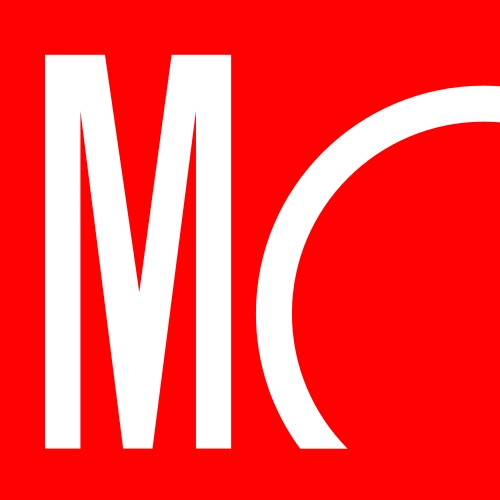After slump this ASX share may be an opportunity
Lower than expected guidance led to a sell-off.
Mentioned: oOh media Ltd (OML)
OOh! media (ASX: OML) provided lower-than-expected 2025 EBITDA guidance of $139 million to $142 million, inclusive of restructuring costs in New Zealand. Abrupt weakness in outdoor advertising markets is the key culprit, with the recent Auckland Transport concession loss also hurting in New Zealand.
Why it matters: The update highlights the perils of a high fixed cost business such as outdoor advertising. Despite a better-than-expected 7% lift in third-quarter revenue, the downturn in October was abrupt and mirrored the challenges recently suffered by advertising peers such as Seven and Nine.
- For instance, we cut our 2025 revenue by 3%, or $21 million, to $692 million. While variable cost of sales declined a little, it still led to an 8%, or $12 million, downgrade to our 2025 adjusted EBITDA forecast to $140 million.
- There are limited levers management can flex to offset such sudden revenue fall. It could only reiterate 2025 operating cost guidance of $159 million to $161 million, but with a likely extra $2 million in restructuring costs in New Zealand that is rudderless without Auckland Transport.
The bottom line: We maintain our $1.65 fair value estimate for no moat-rated oOh! media. Our near-term EBITDA forecasts have been reduced by 5% on average to reflect the prevailing weakness in advertising conditions. However, our longer-term forecasts are largely intact.
- Shares trade at a 24% discount to our unchanged intrinsic assessment after Nov. 6’s 6% slump. Investing in oOh! media has never been for the faint-hearted, with fixed-cost leverage to advertising cyclicality compounded by concession renewal risks. But the long-term structural outlook is positive.
- We hope the incoming CEO James Taylor, who is due to start straight after Nov. 6’s soft earnings guidance, is also not faint-of-heart when it comes to dealing with a volatile stock price and investor sentiment. He is well credentialled to trumpet oOh! media’s solid investment fundamentals.
OOh! media provides weak guidance for 2025 earnings
OOh media is well positioned to benefit from the positive dynamics underpinning the Australian (and New Zealand) outdoor advertising market.
Our view is based on three structural tailwinds. First, unlike other traditional media, outdoor audience is growing. This is due to population growth, greater living density, and increasing commuter traffic on major roads, public transport and in retail precincts—fertile areas for advertisers struggling to reach mass audiences in a fragmenting world.
Second, a key Achilles heel for the outdoor advertising industry was the lack of reliable audience measurement. However, with the 2010 launch of measurement of outdoor visibility and exposure, or MOVE, and its subsequent enhancements, the medium now has greater legitimacy and offers a more robust way for marketers to assess the return on money allocated to outdoor advertising.
Third, in contrast to its debilitating impact on other traditional media, digital technology is a growth facilitator for the outdoor industry. Converting a traditional outdoor advertising site to a digital one is attractive to marketers as it allows creative flexibility, immediacy, and premium presentation. Digital conversion also benefits the outdoor advertising operator as it attracts new clients, allows greater inventory utilization and offers yield management flexibility.
However, like all players in the outdoor advertising space, oOh media’s business model hinges on its portfolio of leasehold concessions. We believe the contract duration for the roads segment is generally five to 10 years, typically with an extension option for another five years. The retail and place divisions are more varied, with renewal agreements generally directly negotiated. The risk is not the group failing to renew these concessions, but the terms on which they will be renewed.
Bulls say
- Outdoor advertising is a growth medium benefiting from structural tailwinds such as increasing audience, more reliable measurement, and conversion of inventory to digital.
- Australian outdoor’s share of the total advertising pie still lags most developed countries such as Canada, the UK, and the global average.
Bears say
- Renewals are likely to be renegotiated at less favorable terms, as landlords seek to share in the attractive returns that oOh media generates from digital conversion or as competitors give away more benefits to landlords.
- Outdoor advertising is highly leveraged to economic conditions, marketing budgets and consumer confidence, and any revenue impact is magnified at the earnings level as around half of oOh media’s cost base is effectively fixed in the form of rental concessions.
Get Morningstar insights in your inbox
Terms used in this article
Star Rating: Our one- to five-star ratings are guideposts to a broad audience and individuals must consider their own specific investment goals, risk tolerance, and several other factors. A five-star rating means our analysts think the current market price likely represents an excessively pessimistic outlook and that beyond fair risk-adjusted returns are likely over a long timeframe. A one-star rating means our analysts think the market is pricing in an excessively optimistic outlook, limiting upside potential and leaving the investor exposed to capital loss.
Fair Value: Morningstar’s Fair Value estimate results from a detailed projection of a company’s future cash flows, resulting from our analysts’ independent primary research. Price To Fair Value measures the current market price against estimated Fair Value. If a company’s stock trades at $100 and our analysts believe it is worth $200, the price to fair value ratio would be 0.5. A Price to Fair Value over 1 suggests the share is overvalued.
Moat Rating: An economic moat is a structural feature that allows a firm to sustain excess profits over a long period. Companies with a narrow moat are those we believe are more likely than not to sustain excess returns for at least a decade. For wide-moat companies, we have high confidence that excess returns will persist for 10 years and are likely to persist at least 20 years. To learn about finding different sources of moat, read this article by Mark LaMonica.

